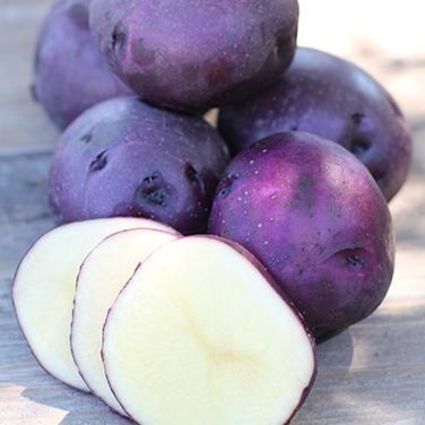Gardeners Gear Up in Hays and Lodge Pole
February 27, 2019
With this having been the second coldest February on record, it may be difficult to think about gardening, but spring is right around the corner. Personnel from the MSU-Fort Belknap Reservation Extension Office encourage everyone to mark their calendars for tonight, February 27, and plan to attend the first Gardeners' Meeting of the new year.
Hays and Lodge Pole gardeners, and anyone who just wants to learn to garden, is invited to attend this meeting scheduled for 6:30 p.m. The meeting will be held at the Kills at Night Center located on Main Street in Hays.
Attendees should be prepared to learn important information about home and community gardening, share ideas, assist with planning, and participate in something positive. A potato bar will also be provided as an evening meal.
According to Hillary Maxwell, MSU-Extension agent for the Fort Belknap Reservation, this meeting will allow for some regrouping to happen. "Meetings like this keep us motivated and allow celebration. The meetings are also an opportunity for us to hear the community's priorities and to circulate new ideas. Essentially, we're saying 'We've come this far, now where do we go from here?'" Maxwell said.
For more information on this event, interested persons can call 353-2656.
Although the MSU-Fort Belknap Extension Program offers a variety of education programs and opportunities centered where members of Fort Belknap Indian Community (FBIC) work and play and MSU-Extension supports the garden projects, no single individual is in charge, according to Maxwell. Instead, several programs and individuals share the responsibilities.

"The community gardens in Hays and in Lodge Pole are a compilation of a lot of people working together. MSU-Extension distributes good information and emphasizes quality groundwork so that the crops sown will survive in the region. Basically, we educate the volunteers on good garden practices and share research, and they do the work," Maxwell stated.
"The primary goals of the community garden are about maximizing healthy food options and beautifying the communities. The garden in Hays, for example, is a park-end garden, which provides a safe life space for people to sit and visit. It's also a demonstration garden that provides free food for people who need it," Maxwell added.
Some of the vegetables and fruits grown in Lodge Pole are part of MSU-Extension research projects. For example, last year, Montana State University (MSU) plant pathology professor Dave Sands' lab identified some low-glycemic potatoes approved for diabetics, including the Huckleberry Gold variety. These potatoes with their deep purple skin and yellow flesh are popular with the FBIC because, statistically, one in six American Indian and Alaska Native adults has diagnosed diabetes-more than double the prevalence rate for the general U.S. population. The Huckleberry Gold potato is not only exceptionally high in antioxidants, but its low glycemic index means that diabetics can enjoy these potatoes because they do not cause the rapid spike in blood sugar that normally comes with eating starchy foods. Addressing health concerns through diet is one of the goals of the garden projects.
In the fall of 2012, MSU Extension was awarded a Specialty Crop Block Grant through the Montana Department of Agriculture to establish fruit tree cultivar research sites across the state. A cultivar is a plant variety that has been produced in cultivation by selective breeding. This project received a Montana Department of Agriculture Growth Through Agriculture Grant in the spring of 2015 to establish two additional sites, one at Shelby and another at Lodge Pole.
The goal of the fruit tree research in Montana is to evaluate the performance of apple, pear and plum cultivars, focusing on areas of the state with little to no current fruit production. Each of the ten sites has a core group of cultivars replicated at all the sites, with three replications of each cultivar at each site.
This past year, the pear cultivars that thrived at the Lodge Pole orchard are the Golden Spice and Patten varieties. The apple cultivars that showed the greatest promise for this region were the Honeycrisp/Bud 9, Sweet 16, and Spartan/M7. However, there was no real success with Mount Royal, Toka or Pipestone plums.
According to researchers, the keys to a successful fruit tree orchard include site evaluation and preparation, good rootstock, proper cultivar selection, proper irrigation, reducing plant competition, maximizing the potential of the soil, testing for nutrients, and using proper fertilization. Research is ongoing for what works best in areas across the state with differing soils and climates.
"We've got a lot going on in gardening in the south eastern corner of Blaine County," Maxwell said.


